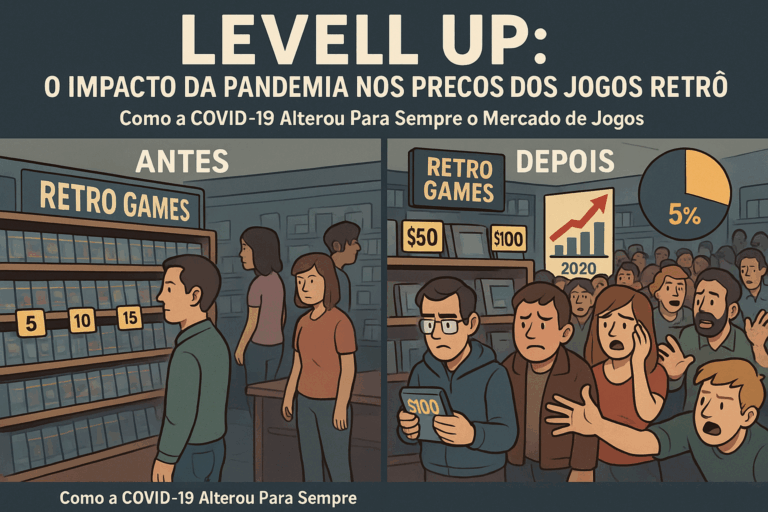In the ever-evolving digital landscape, staying savvy and proactive is more crucial than ever. This holds especially true when it comes to navigating through the maze of seemingly attractive deals and offers bombarding our screens every single day. Unknowingly, we might be walking into a carefully crafted trap, meticulously designed to lure us with ‘unbeatable prices’. Welcome, dear reader, to the enigmatic world of sneaky price tricks – a territory where discernment and knowledge are your most potent tools. This article aims to serve as your comprehensive guide to unmask these seemingly harmless, yet subtly deceptive practices.
Our journey begins by shedding light on the art of pricing strategies, a marketing ploy that businesses often employ to create an illusion of value. However, it’s not all doom and gloom – a well-informed consumer can turn the tables, transforming these intricate schemes into opportunities for cost-saving. With an understanding of these strategies, we can make smarter purchasing decisions, ensuring that we get the most bang for our buck.
Next, we delve into the realm of psychological pricing. This clever technique taps into our cognitive biases and emotional responses to influence our purchasing decisions subtly. Ever wondered why prices often end in .99 or why we’re more likely to buy in bulk when we see the tagline ‘buy one get one free’? You can bet that psychology has a significant role to play in these scenarios. Unraveling the science behind these strategies will not only help us spot them but also resist their hypnotic allure.
Following this, we explore the emergence of dynamic pricing, a relatively new, data-driven strategy employed by online retailers. This strategy involves altering prices based on various factors like demand, time of day, and even your browsing history. While dynamic pricing isn’t inherently bad, it’s crucial to understand its workings to ensure we’re not paying more than we should.
Finally, we arm ourselves with practical tips and strategies to outwit these sneaky price tricks. From browser extensions that track price fluctuations to understanding the best times to shop, we’ll equip ourselves with a toolkit designed to turn us into savvy, scam-proof shoppers.
In the face of advancing technology and increasingly sophisticated pricing schemes, staying informed is our best defense. Join me in this exploratory journey as we uncover the hidden intricacies of pricing strategies, empowering ourselves to make informed decisions and avoid falling prey to clever marketing traps. Because when it comes to smart shopping, knowledge is indeed power. So, let’s dive in and unravel the secrets of the retail world, one price tag at a time.
Understanding the Art of Price Deception
In today’s fiercely competitive market, businesses are always on the lookout for strategies to entice customers. One such tactic is price deception. A company may display a lower price upfront, only to include additional costs later in the purchase process. While this strategy might seem effective in attracting potential buyers, it can be a costly mistake for consumers. As an informed consumer, you must be aware of these tactics to avoid falling into a price trap.
Price deception is more than just a sneaky business practice; it’s an art form. Companies employ behavioral economists and psychologists to understand consumer behavior better and use this knowledge to their advantage. For instance, retailers often use the “left-digit effect” where they price products as $4.99 instead of a round $5. This strategy exploits our tendency to pay more attention to the number’s left-most digit, making the product seem cheaper than it is.
The good news is, once you’re aware of these tactics, you can stay savvy and avoid getting scammed. It’s all about understanding the psychology behind pricing and staying one step ahead. So, let’s dive in and uncover some common price tricks used by businesses and how you can avoid falling for them.
Common Price Deception Tactics and How to Avoid Them
1. Drip Pricing
Drip pricing is a common tactic used in various industries like travel, e-commerce, and ticketing. Here, a business advertises a lower price upfront but adds additional costs (like taxes, service charges, shipping fees) as you progress through the checkout process. The idea is to lure customers in with an attractive base price and then reveal the full cost later. To avoid this, always make sure to check the final price before completing your purchase.
2. High-Low Pricing
In high-low pricing, retailers set high regular prices but frequently offer sales and discounts. This strategy creates a sense of urgency among buyers and encourages impulse purchases. It can also lead to a false perception of savings if the regular prices are inflated. To combat this, resist the impulse to buy just because something is on sale. Instead, focus on whether the product is worth the discounted price.
3. Anchoring
Anchoring is a psychological tactic where the first price you see (the “anchor”) influences your perception of subsequent prices. Retailers often use this strategy by showing the “original” price next to the “sale” price, making the discounted price seem like a great deal. To avoid this trick, try to evaluate the product’s value independent of the original price.
Identifying and Comparing Price Tricks: A Practical Guide
Now that we have discussed some common price tricks, the question is – how do we identify these in the wild? And more importantly, how do we compare them to make sure we’re getting the best deal? Here’s a practical guide to help you stay savvy:
- Do your research: Before making a purchase, do a quick online search to compare prices from different sellers. This will help you identify any unusually high or low prices.
- Use price comparison tools: There are several price comparison tools available online that can help you compare prices from different sellers at a glance. Some popular options include Google Shopping, PriceGrabber, and Shopzilla.
- Read the fine print: Always read the terms and conditions before making a purchase. This will help you understand any additional costs that may be added to the final price.
- Watch out for sales and discounts: While sales and discounts can be a great way to save money, they can also be a tactic to make you think you’re getting a better deal than you are. Be skeptical of too-good-to-be-true discounts and always compare the sale price with the regular price.
Let’s illustrate these points with a comparative table:
| Price Deception Tactic | How to Identify | How to Compare |
|---|---|---|
| Drip Pricing | Additional costs added at checkout | Check the final price before purchase |
| High-Low Pricing | Frequent sales and discounts | Compare sale price with regular price |
| Anchoring | Original price shown next to sale price | Evaluate product value independent of original price |

Conclusion
In conclusion, the art of price deception is an intricate web of tactics employed by businesses to influence consumer behavior. The use of psychological strategies such as the “left-digit effect,” drip pricing, high-low pricing, and anchoring serve as testimony to the lengths companies go to manipulate perceptions of value and affordability. The potential for consumers to fall into these price traps underscores the importance of being informed and aware.
As we navigate the complex landscape of modern commerce, it is crucial to remember that not all that glitters is gold. A cheaper upfront price may entail hidden costs later in the purchase process. Sales and discounts may be an attempt to push inflated regular prices, and the juxtaposition of an original price with a sale price might be a tactic to create an illusion of value.
But remember, awareness is the first line of defense. By understanding the psychology behind pricing and familiarizing yourself with common price deception tactics, you can stay one step ahead. The tools and strategies discussed in this article – conducting thorough research, using price comparison tools, reading the fine print, and evaluating the true value of a product independently – can equip you to make informed and savvy purchasing decisions.
However, the onus of ethical pricing does not fall solely on consumers. Businesses must also play their part in promoting transparency and fairness in pricing. After all, while deceptive pricing tactics may lead to short-term gains, in the long run, they can erode consumer trust and damage a company’s reputation.
I invite you to use the knowledge gained from this article as a stepping stone towards smarter, more informed consumer behavior. Share this information with friends and family so they too can avoid falling into the trap of price deception. And, if you have any experiences or insights about price deception tactics, feel free to leave a comment. Your input could prove invaluable to others navigating the world of consumer purchasing.
Remember, a savvy consumer is a smart consumer. Stay informed, stay vigilant, and you’ll not only avoid the pitfalls of price deception but also make the most of your hard-earned money.
Thank you for reading, and here’s to smart shopping!
For more information on consumer behavior and pricing tactics, visit active sources such as the Federal Trade Commission and the Consumer Reports.
References:



